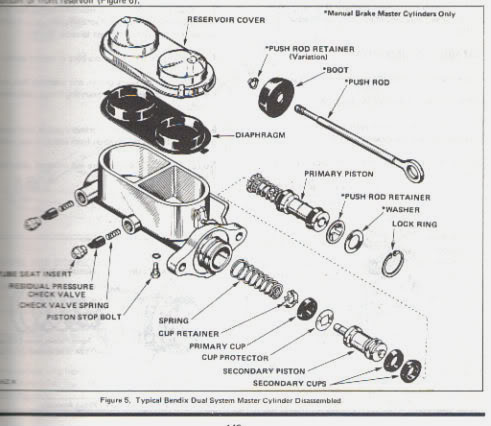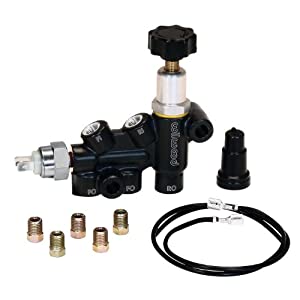Okay, a member here was asking about upgrading to discs.
I do not have all the answers to your questions, but will share a few things.
First, the gov't due to public demand and pressure, required manufacturers to install dual systems starting in 1967. Prior to this, most vehicles has a single master cylinder.

This worked fine when operated, BUT if there was a leak anywhere in the system, all braking was affected. Using a dual master cylinder split the system into 2 parts. These were usually split into a front and back system, although some European cars split it into one front and one rear per section.

When there was a leak on one circuit, the other circuit will still work.
So if you have a pre-67 van, your first consideration should be a dual master cylinder. This will often require some modification since they are physically longer, and you will have to add lines that split the system. Its also a good idea to put in a proportioning valve. This is used to allow the front brakes to operate first, and stop the vehicle smoothly. The factory included a switch in these to turn on a light when the two circuits were not providing the same pressure, as a warning that there was a problem. The whole component was then called a combination valve. Each one is made for a specific car, truck or van, with different rates of proportioning.

There are quite a few adjustable proportioning valves made for hot rods and racing cars. They are used to fine tune the brakes for the vehicle and even during racing for changing conditions. If you are building a complete new braking system, you will want to include one of these to be able to get the brakes dialed in. Some even include the safety switch.

That is the first step to safer brakes. It will not make any big difference in how much effort is needed, how well the brakes stop the van or how many stops they can provide, but can be adjusted to get the most out of the brakes hanging off each corner.
I do not have all the answers to your questions, but will share a few things.
First, the gov't due to public demand and pressure, required manufacturers to install dual systems starting in 1967. Prior to this, most vehicles has a single master cylinder.

This worked fine when operated, BUT if there was a leak anywhere in the system, all braking was affected. Using a dual master cylinder split the system into 2 parts. These were usually split into a front and back system, although some European cars split it into one front and one rear per section.
When there was a leak on one circuit, the other circuit will still work.
So if you have a pre-67 van, your first consideration should be a dual master cylinder. This will often require some modification since they are physically longer, and you will have to add lines that split the system. Its also a good idea to put in a proportioning valve. This is used to allow the front brakes to operate first, and stop the vehicle smoothly. The factory included a switch in these to turn on a light when the two circuits were not providing the same pressure, as a warning that there was a problem. The whole component was then called a combination valve. Each one is made for a specific car, truck or van, with different rates of proportioning.

There are quite a few adjustable proportioning valves made for hot rods and racing cars. They are used to fine tune the brakes for the vehicle and even during racing for changing conditions. If you are building a complete new braking system, you will want to include one of these to be able to get the brakes dialed in. Some even include the safety switch.

That is the first step to safer brakes. It will not make any big difference in how much effort is needed, how well the brakes stop the van or how many stops they can provide, but can be adjusted to get the most out of the brakes hanging off each corner.









